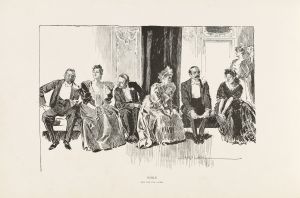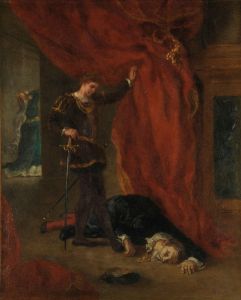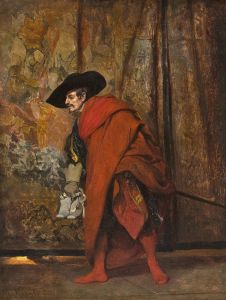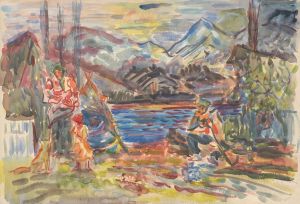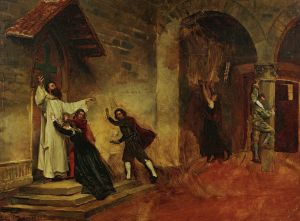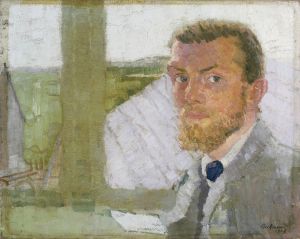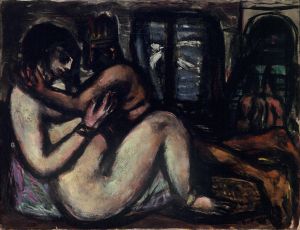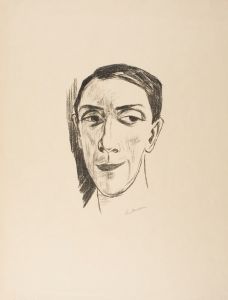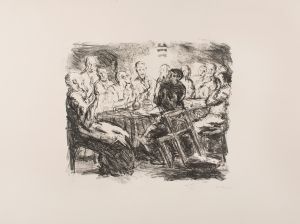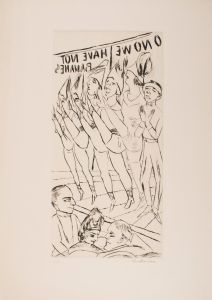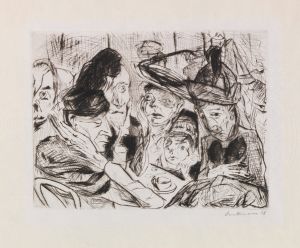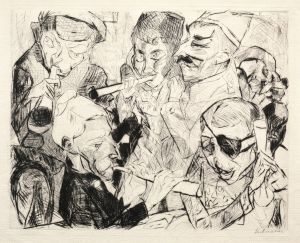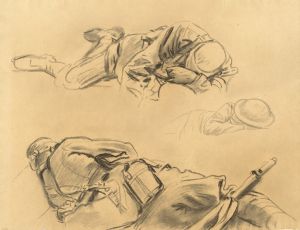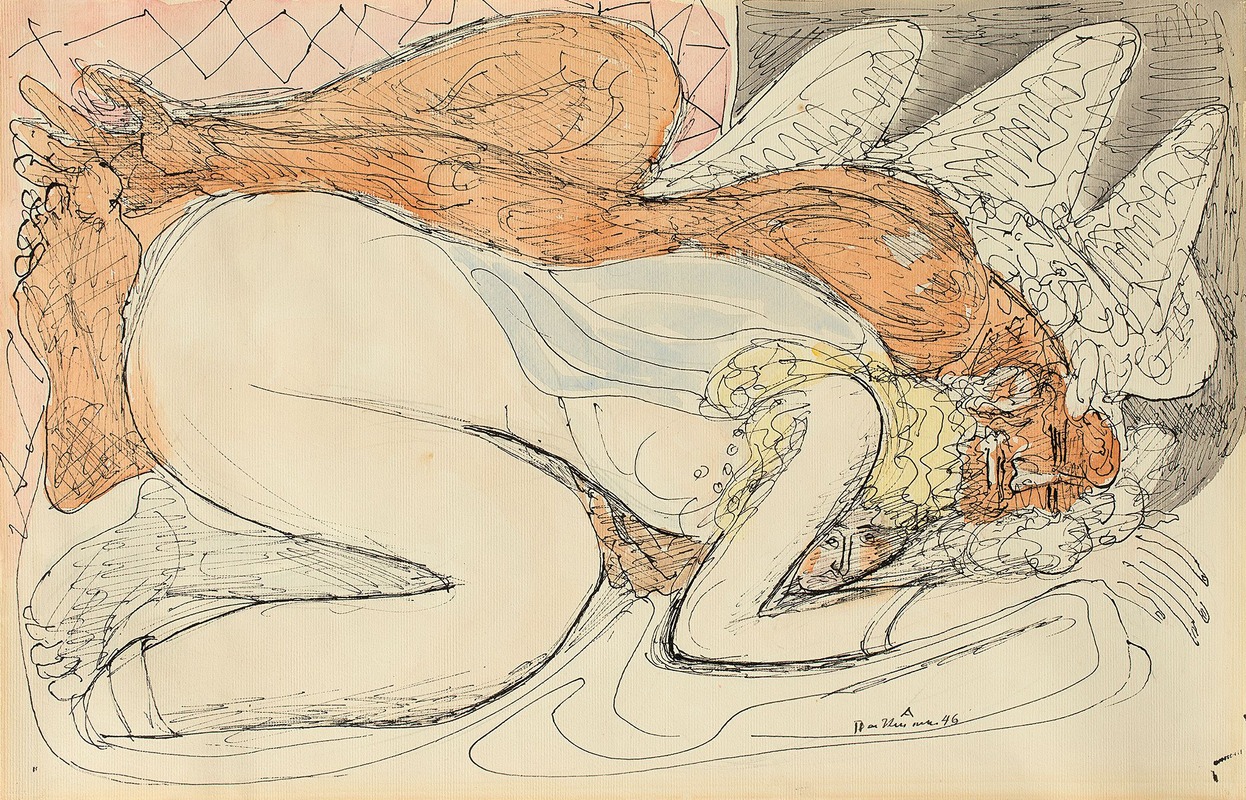
Jupiter und Jokaste
A hand-painted replica of Max Beckmann’s masterpiece Jupiter und Jokaste, meticulously crafted by professional artists to capture the true essence of the original. Each piece is created with museum-quality canvas and rare mineral pigments, carefully painted by experienced artists with delicate brushstrokes and rich, layered colors to perfectly recreate the texture of the original artwork. Unlike machine-printed reproductions, this hand-painted version brings the painting to life, infused with the artist’s emotions and skill in every stroke. Whether for personal collection or home decoration, it instantly elevates the artistic atmosphere of any space.
Max Beckmann's painting Jupiter und Jokaste (Jupiter and Jocasta) is a notable work by the German Expressionist artist, created in 1936. Beckmann, known for his complex and symbolic compositions, often drew upon mythology, literature, and personal experiences to explore themes of human existence, power, and the interplay between the divine and the mortal.
In Jupiter und Jokaste, Beckmann depicts a scene inspired by classical mythology, though the exact narrative interpretation remains open to scholarly discussion. The painting portrays two central figures, Jupiter, the king of the gods in Roman mythology, and Jocasta, a figure from Greek mythology most famously known as the mother and wife of Oedipus in Sophocles' tragedy. Beckmann's choice to juxtapose these two mythological figures, who do not traditionally appear together in classical stories, reflects his interest in reinterpreting mythological themes to comment on universal human experiences.
The composition is characterized by Beckmann's signature style, which includes bold, angular forms, vivid colors, and a sense of psychological tension. The figures are rendered with a dramatic interplay of light and shadow, emphasizing their emotional intensity and the enigmatic relationship between them. The painting's setting, like many of Beckmann's works, is ambiguous, blending elements of the real and the fantastical.
Created during a tumultuous period in Beckmann's life, Jupiter und Jokaste reflects the artist's response to the political and social upheavals of the 1930s. Beckmann had been labeled a "degenerate" artist by the Nazi regime, and his works were removed from German museums. This forced him into self-imposed exile in Amsterdam in 1937, shortly after the completion of this painting. The themes of power, fate, and human vulnerability in Jupiter und Jokaste can be seen as a reflection of the broader anxieties of the time.
Today, Jupiter und Jokaste is recognized as an important example of Beckmann's mature period, showcasing his ability to merge mythological references with modern existential concerns. The painting is held in a private collection and has been exhibited in various retrospectives of Beckmann's work, contributing to the ongoing appreciation of his artistic legacy.





